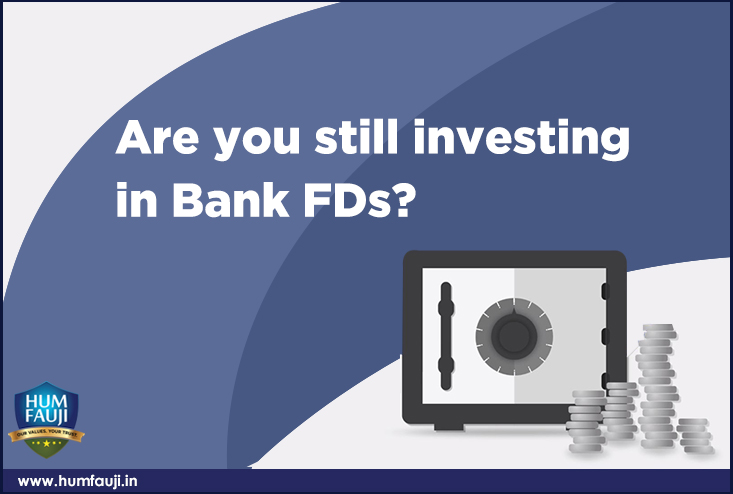If you are like most Indian investors, you would have a large part of your money invested in bank FDs. This is due to the Indian penchant for investing in safe instruments with high liquidity even at the cost of high taxation. In fact, I have often come across a large number of investors who do not need money for a long time but still prefer to invest in short term bank FDs of a year or so, to be auto-renewed each year. In the current era of falling interest rates, this translates into them renewing their FDs every year at constantly falling rates, rather than locking in their deposits for a long term at high interest rates.
However, if you are a smart investor, you should seriously consider replacing most (or even all) your bank FDs with Fixed Maturity Plans (FMPs) of mutual funds.
What are FMPs?
FMPs are the mutual fund equivalent of a bank FD. They are for a fixed period, generally from a few months to 3 years, though FMPs of even 5 years are sometimes available. Other characteristics of the FMPs are:
- While bank FDs are deposits in bank debt instruments, FMPs are debt instruments managed by mutual funds which invest typically in Govt backed securities, and corporate fixed deposits, thus being secure almost like a bank FD.
- As per SEBI rules, FMPs can give out only indicative returns, and not guaranteed returns, as they used to do earlier. Currently, they offer returns of approx 9.5% but this depends on the kind of instrument they will invest in.
- FMPs are open only for a limited time, generally for 7-10 days.
What are the advantages of FMPs over bank FDs?
The biggest advantage of FMPs over bank FDs is in tax efficiency. However, to gain this tax advantage, you should invest in FMPs of tenure of one year or more so that your gains get considered as Long Term Capital Gains (LTCG) which gets you the advantage of indexation benefits. This benefit is not available to bank FDs. So, if you take a one year FMP, you can pay a tax of 10% without indexation or 20% with indexation, whichever is beneficial to you, even if you are in the highest tax slab of 30%.
What is Indexation?
The Govt recognises that inflation erodes the real value of any investment. So every year, the Govt comes out with a cost of inflation index (CII) based on the prevailing rate of inflation. The cost of investment is indexed by multiplying the index of the year of maturity and divided by the inflation index prevailing on the year of investment. Eg, if you invested Rs 10,00,000 in Financial Year 2012-13 (when CII was 852), its cost will be taken as Rs 11,02,110 in Financial Year 2013-14 since the CII this year is declared as 939 (=10,00,000 X 939 / 852). Hence, if your one year FMP has given you 10% returns and made your Rs 10 Lakh as Rs 11,00,000/-, you will pay NIL tax since your cost price after indexation is Rs 11,02,110. Thus, in fact, you have made a notional loss of Rs 2,110 which can be set-off against some other gain! If you had earned the same amount in a bank FD and you were in 30% bracket, you would have paid a tax of Rs 30,900/- on the interest of Rs 1,00,000/- you would have earned, thus bringing down your net interest rate to 6.91%.
In case you had gone in for a 3 year FMP in the year 2010-11 (CII of 711), your Rs 10 lakh investment would have been considered to be costing you Rs 13,20,675 after indexation. If you had got 10% annualised returns, your maturity amount of Rs 13,31,000 would be considered to have earned you a profit of only Rs 10,325 on which you pay a tax of Rs 2,127/-. In case of a similar bank FD, you would’ve paid a total tax of Rs 1,02,279/-.
Indexation can work more wonders if you invest across multiple financial years. Eg, if you invest in a 15 month FMP in Feb 2014, your maturity would be in April 2015, across three Financial Years 2013-14, 2014-15 and 2015-16, giving you double indexation benefits even though the investment is just for 1.25 years. Couple this with the high interest rates prevailing currently, and you have a great investment avenue with huge tax-efficiency and safety.
And what are the disadvantages of FMPs
Primarily two:
- One, there is practically no exit available mid-way in a FMP. Hence, you need to invest that money in a FMP which you do not need for that period. In fact, this limitation can be used to an advantage to put away money which you need for a financial goal later (like for child’s education or marriage, or for paying a property instalment) in a safe, tax efficient instrument.
- Second, due to Govt regulations, the FMPs cannot let you know any guaranteed returns, though ‘indicative’ returns are allowed to be told.
If they give better returns than bank FDs and are practically as safe, why don’t people invest in them?
Lack of awareness and general perception amongst people of all mutual funds being risky.
How to go about Investing in a FMP
Do give us an email on contactus@humfauji.in letting us know the period for which you wish to invest and the amount. We will search out the best FMP available at that time and email you the same. But please remember that FMPs are open only for a limited time and you will have to send us the complete documents at least two days before the closing date.
Col (retd) Sanjeev Govila, Certified Financial PlannerCM
CEO, Hum Fauji InitiativesTM
Visit our Blog, https://humfauji.in/blog or facebook page http://www.facebook.com/HumFaujiInitiatives or follow us on Twitter https://twitter.com/#!/humfauji to get latest insight on matters financial














Leave a Reply